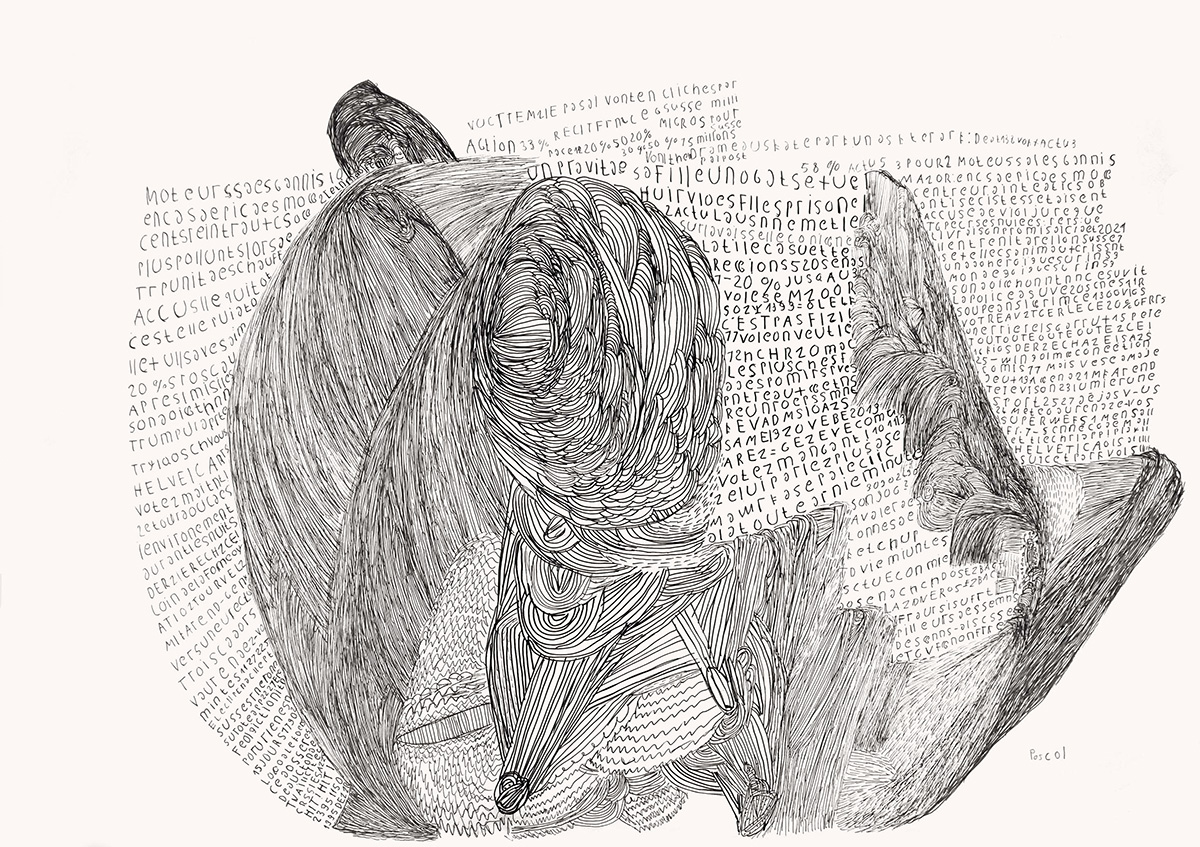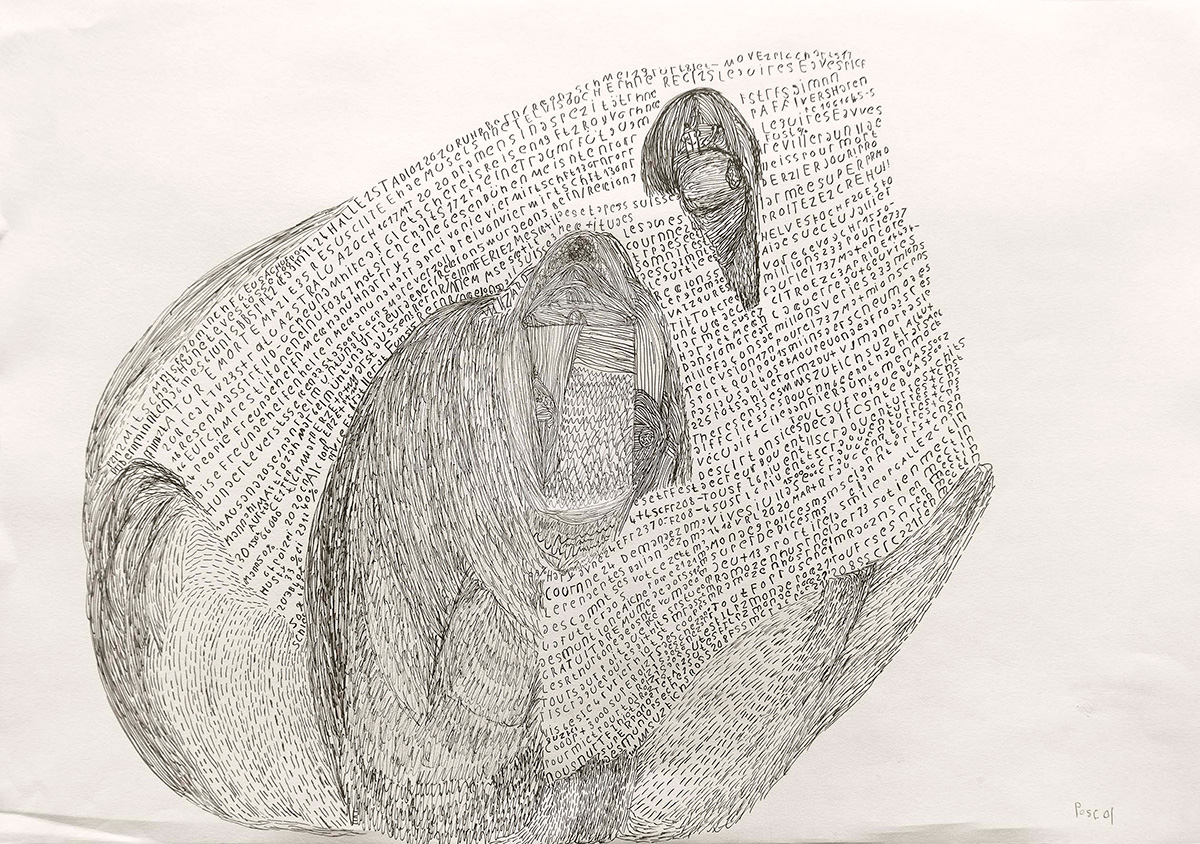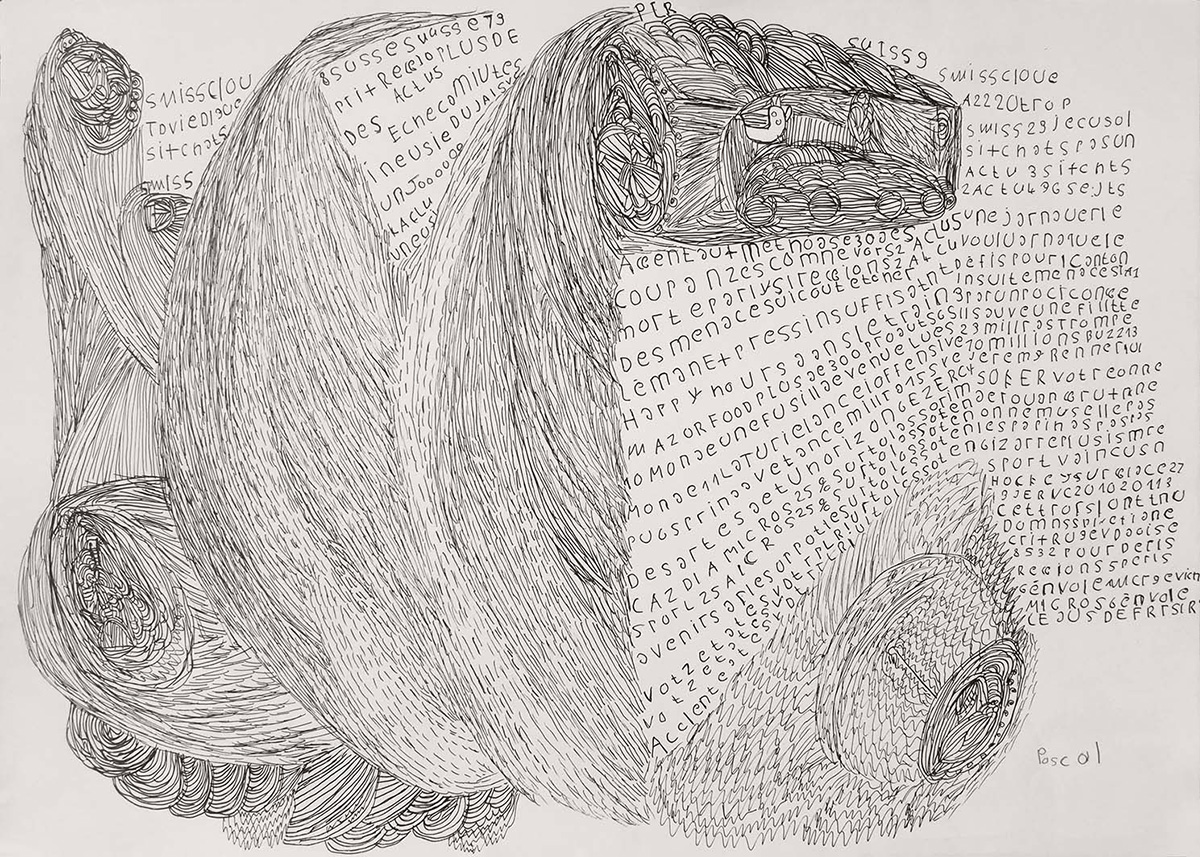PRESENTATION: Écrits d’Art Brut-Wild Expression & Thought, Part II
 Art brut is a French term that translates as “raw art”, invented by the French artist Jean Dubuffet to describe art such as graffiti or naïve art which is made o Jean Dubuffet saw fine art as dominated by academic training, which he referred to as ‘art culturel’ or cultural art. For Dubuffet, art brut − which included graffiti, and the work of the insane, prisoners, children, and primitive artists was the raw expression of a vision or emotions, untrammeled by convention.
Art brut is a French term that translates as “raw art”, invented by the French artist Jean Dubuffet to describe art such as graffiti or naïve art which is made o Jean Dubuffet saw fine art as dominated by academic training, which he referred to as ‘art culturel’ or cultural art. For Dubuffet, art brut − which included graffiti, and the work of the insane, prisoners, children, and primitive artists was the raw expression of a vision or emotions, untrammeled by convention.
By Dimitris Lempesis
Photo: Museum Tinguely Archive
The major Group exhibition “Écrits d’Art Brut – Wild Expression & Thought” brings together the myriad writings of thirteen international Art Brut authors. These writers, most of whom lived or live as hermits or outcasts on the fringes of society, create their own world without even knowing that what they are doing belongs to the realm of the fine arts. They leave their mark on all sorts of supports, including embroidered cloth and painted walls. The works from a dozen museums as well as public and private collections in Europe and Brazil are being shown together here in Switzerland for the first time. The documentary films and photographs flanking them portray these unusual creators in their own homes or at their place of work and so invite visitors to immerse themselves in worlds that were never intended for public consumption. Declarations of love, letters of rage, poems, prayers, erotic messages, pleas, diary-like notes, and utopian narratives: The in many cases little-known writings of Art brut creators astonish and fascinate. Mostly written behind closed doors, in silence and in secret, they often bear no address or were intended for a dreamlike or spiritual addressee. The texts, written in peculiar calligraphy, scribbled, or hastily noted, at times embroidered or fervently carved in stone, are often accompanied by pictures or drawings. They reveal an astonishing creativity, spring from an urgent need to express oneself, and represent a kind of silent resistance. Writing encourages introspection and becomes an important creative resource, at times paving the way for a search for identity or the invention of another life, and at other times enabling the construction of a new world or the reshaping of the cosmos. Slips and sheets of paper, booklets and volumes, body decoration and textiles become carriers of extravagant personal inscriptions, poetic and concrete at the same time. They support the persistent search of their authors: the search for the essence of things and words. The thirteen authors ,discovered by Jean Dubuffet or more recently, are free of any desire for publicity. They are imaginative and uninhibited in their approach and playful in their use of syntax, grammar, and orthography. Instead of paying attention to conventions and norms, Adolf Wolfli, Arthur Bispo do Rosario, and Giovanni Battista Podesta – whom Jean Tinguely particularly appreciated – preferred to deal with new linguistic creations, semantic games, or graphic labyrinths of words, sentences, and signs. Line by line, they shake up and defy rules, since their intention is neither to communicate nor to exchange information. Instead, thoughts take their course; ideas, often confusing, form, and their imagination seems to surprise the writers themselves. Writing takes on a performative value. The fragile, textile works of the Brazilian Arthur Bispo do Rosario included in the show “Ecrits d’Art Brut – Wild Expression & Thought” are being exhibited here in Switzerland for the first time. The only living artist represented in the exhibition is Pascal Vonlanthen from Switzerland. Some of his drawings are likewise shown here for the first time, as are some of the works of Fernando Nannetti. The film about Vonlanthen’s work was shot in the run-up to the exhibition. There are also videos that give visitors a glimpse of the lives led by the other, now deceased authors, while rare portrait photographs lend the scenography a human face. Another highlight is a destroyed work by Marie Lieb (all that survives of which are the two photographs of 1894 preserved in the archives of Heidelberg Psychiatric Clinic, which was reconstructed by the artist Mali Genest specially for the exhibition.
With works by: Arthur Bispo do Rosario, Giovanni Bosco, Marie Lieb, Heinrich Anton Muller, Fernando Nannetti, Laure Pigeon, Giovanni Battista Podesta, Armand Schulthess, Constance Schwartzlin- Berberat, Charles Steffen, Pascal Vonlanthen, Adolf Wblfli and Carlo Zinelli.
Photo: Arthur Bispo do Rosario, Manto de apresentai;:ao (inside), undated, Embroidered fabric, braided yarn, paper and metal; 118,5 x 141,2 x 7 cm, © Museo Bispo, Rio de Janeiro
Info: Curator: Lucienne Peiry, Museum Tinguely, Paul Sacher-Anlage 2, Basel, Switzerland, Duration: 20/10-2021-23/1/2022, Days & Hours: Tue-Sun 11:00-18:00, www.tinguely.ch
![Left: Carlo Zinelli, Alpino stellato e animale rampante rossi, 03.09.1967, Gouache on paper; 70 x 50 cm, © Donation de L'Aracine en 1999, LaM Lille metropole musee d'art moderne, d'art contemporain et d'art brut, Villeneuve-d'Ascq (France) [999.611 (V)] Right: Carlo Zinelli, Untitled, undated, Gouache; 83 x 64 x 5 cm, © Collezione Carlo Zinelli, Verona](http://www.dreamideamachine.com/web/wp-content/uploads/2021/10/4S05374_1000x1000.jpg)
Right: Carlo Zinelli, Untitled, undated, Gouache; 83 x 64 x 5 cm, © Collezione Carlo Zinelli, Verona
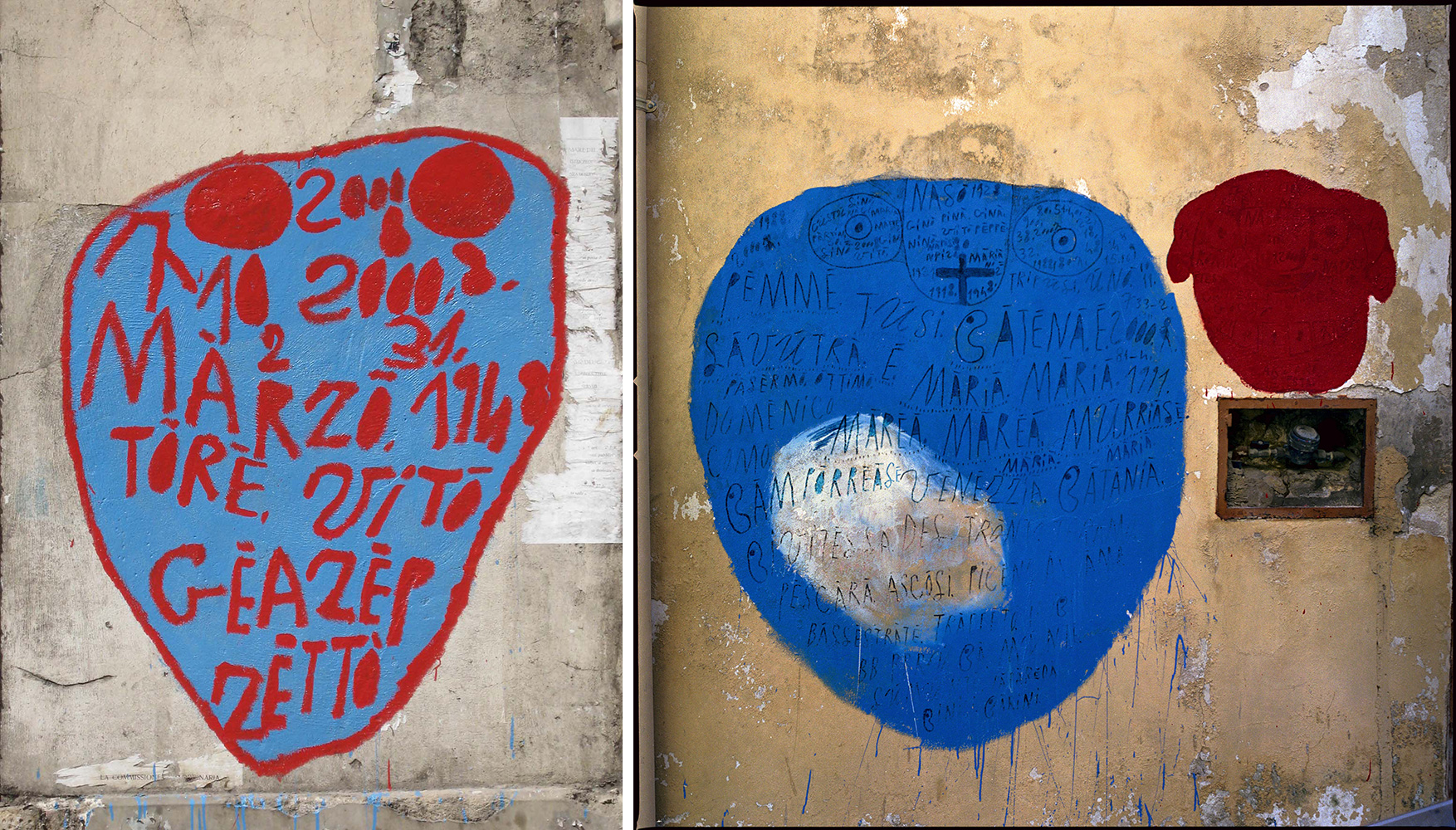
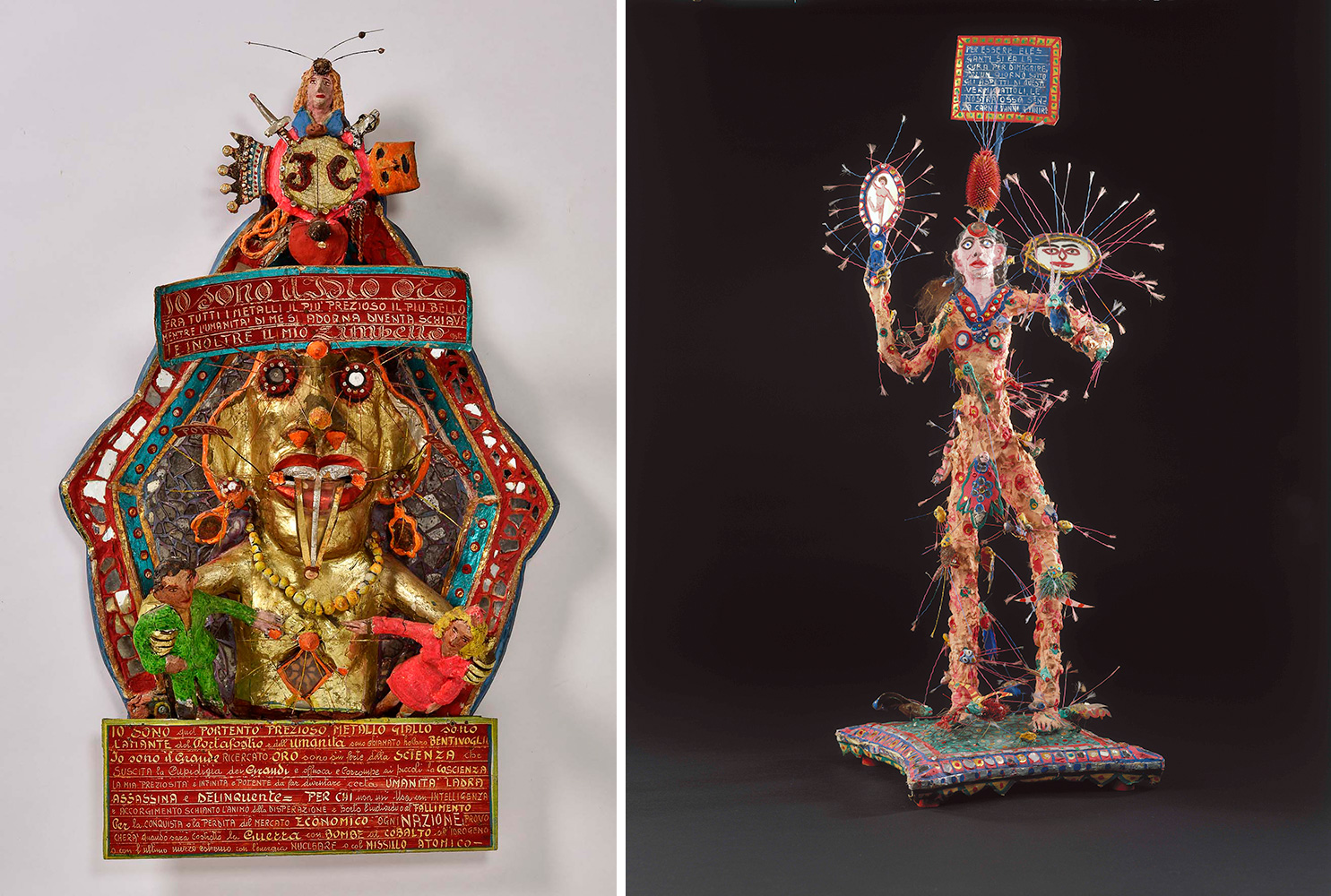
Right: Giovanni Battista Podesta, Le piccolo Museo – La cure d’amaigrissement,, 1969 -1994, Paste of sawdust, glue, plaster, reinforced with wire; 70 x 20 cm, © CNAP – Centre national des arts plastiques, Paris La Defense
